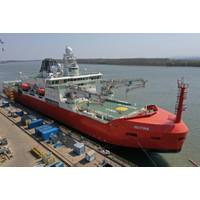
Sea Trials for Australia's New Icebreaker Delayed Due to COVID-19
situation, we don’t know when the ship will be finished and ready to undergo the required sea-trials before being handed over to the Australian Antarctic Division,” Clark said.The 160-meter-long, 24,000-metric-ton RSV Nuyina, designed by Knud E Hansen, was built to replace the retired Aurora Australis, offering scientists extended access to the Southern Ocean and Antarctica.RSV Nuyina was slated to make its first voyage to Antarctica for the 2020-2021 summer season, operated by Serco Defence under the direction of the AAD for the Australian Government, but its delayed arrival means an alternative
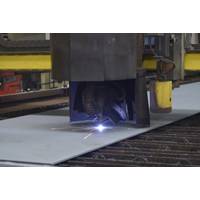
First Steel Cut for Australia's New Polar Research Ship
boasts considerable cargo capacity: up to 96 TEU below decks and 14 TEU and six 10-foot containers on the aft deck, as well as more above the helicopter hanger and in front of the helideck. This represents a substantial increase in container carrying capacity from the AAD’s current vessel, the Aurora Australis, which can transport a total 19 containers. In practical terms, this means that the ice-breaking ASRV will be able to resupply two stations in one voyage. In addition to supplying Australia’s three permanent research stations on the Antarctic continent as well as its research
Wyatt Earp Continues Antarctic Mission
Australia for the purpose of assessing the current status of benthic habitat in the vicinity of Davis Station. Data from these hydrographic surveys will assist with safe passage of shipping transiting this area. Wyatt Earp is loaded onto Australia’s Antarctic Flagship, the RSV Aurora Australis, which then makes the journey from Hobart to the Australian Antarctic Stations across the Southern Ocean. Winds here can reach up to 120-150 kilometres per hour, coupled with with storms that can generate seas of up to 10 metres. The Antarctic Survey Vessel is the namesake of the polar
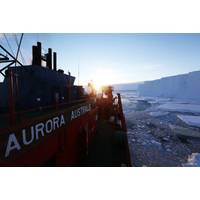
Expedition to Study Ocean’s Role in Glacial Melting
team of around 30 scientists, technicians and PhD students from CSIRO, the Antarctic Climate & Ecosystems CRC (ACE CRC), the University of Tasmania’s Institute for Marine & Antarctic Studies, and the Australian Antarctic Division will leave from Hobart on Australia’s icebreaker Aurora Australis today (Thursday). Chief Investigator and CSIRO Oceans and Atmosphere scientist, Dr. Steve Rintoul, said the team hopes to reach areas surrounding the Totten Glacier that were inaccessible on a previous voyage in 2014-15 due to sea ice. “This voyage aims to advance our
Drone Technology Aids Antarctic Ship Operations
A quadcopter drone has helped navigate the Aurora Australis through the sea ice on its annual resupply voyage to Casey station. Flown off the aft deck of the ship, the unmanned aerial vehicle (UAV) provided the crew with real-time imagery of the sea ice conditions ahead of the ship, optimising navigation decisions. Australian Antarctic Division Future Concepts Manager, Matt Filipowski, said the drone was a valuable addition to the current suite of sea ice navigation tools, which include satellite imagery and radar. “This is the first time the Australian Antarctic
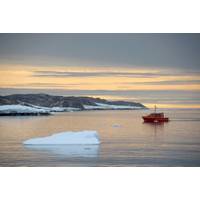
Australian Navy Surveys Antarctica
The Royal Australian Navy’s Deployable Geospatial Survey Team returned from a six-week Antarctic expedition to collect essential data for navigational charts and scientific research. The team sailed from Hobart in RSV Aurora Australis on December 11, 2013 to conduct a hydrographic survey in the vicinity of Casey Station, a permanent base in Antarctica managed by the Australian Antarctic Division (AAD). The Officer in Charge of the survey team, Lieutenant Peter Waring, said the cold climate task was challenging and fascinating: “We conducted the survey from onboard the Australian
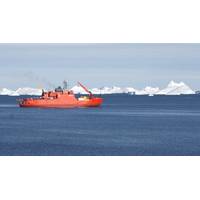
Australian Icebreaker Assists Antarctic Research
Australian Antarctic icebreaker Aurora Australis has departed Casey research station to return to Australia. The ship weighed anchor to leave Casey at 1,600 hours (AEDST) carrying summer personnel, scientists and cargo for return to Australia. The 52 passengers rescued from the Akademik Shokalskiy, who have been well-cared for on board during resupply, are looking forward to the trip home. The journey to Hobart will take approximately seven to eight days and Aurora Australis is expected to arrive in Hobart on or about January 22, about 14 days later than originally scheduled. The ship has



 February 2024
February 2024





